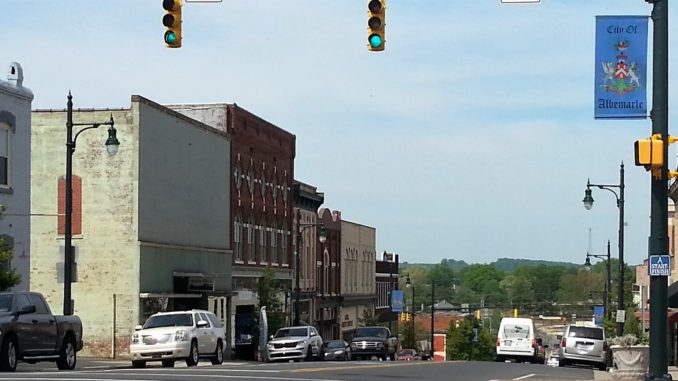
ALBEMARLE — In a recent meeting, the Albemarle City Council determined that planning for a “social district,” which would simplify alcohol permitting and regulation in certain downtown zones, can proceed.
“City council approved for me to move forward with implementation of a social district,” Joy Almond, Albemarle’s Main Street manager, told SCJ on Feb. 14.
She made clear, though, that this would not be fully approved until a public-input session and a city staff session were completed. After that, an ordinance draft would still need to be presented to and approved by the city council.
“We were just going through some questioning as to how we handled licensing through the ABC office,” Almond said on how restaurants and bars license for outdoor events that take place downtown. “Having that social district in place would eliminate those headaches of trying to figure out which businesses are responsible for licensing. So that was the driving force, at least for Albemarle, in terms of implementation of a social district.”
Almond said that these districts have been used successfully in other cities to simplify everything from big outdoor events to an average night of people socializing downtown. She cited Kannapolis as one local area that uses a social district for their downtown alcohol licensing.
“Basically, how it works is there is a boundary,” Almond said. “That’s where most of the work is going to come into play, and where getting that input session and getting that public feedback is going to come into play, is establishing the boundary of the district or districts.”
She said that within the boundary, businesses will be allowed to sell alcohol to consumers who do not plan on staying on premises. If there is music outside, or if they just want to talk with someone on the sidewalk, that is fine as long as they purchased the alcohol from one of the businesses within the boundary and it is consumed within the boundary. As Almond said, “There is no BYOB [bring your own beer] with a social district.”
“There’s also the matter of the beverage containers,” she said. “You have to use a uniform beverage marker for every business that participates — whether they all have the same color cup or if it’s a sticker. I know that other places that have social districts, they’ll use their plastic cup and everyone has the same branded sticker where they write the date and time and stick it on the cup. So there’s a couple different options that we need to explore there as well.”
Another element that will be considered is the day and time. She said that some places, like Kannapolis, allow their social district to operate seven-days-a week, but only during certain times of day. Other cities only allow certain days in general.
“That public input and getting that feedback from our downtown stakeholders will determine and firm-up those dates and times that we would allow the social district to take place,” she said.
Almond said she plans on holding the public-input sessions in April but does not have a firm date set yet. But in terms of the feedback she is receiving so far, she says it is almost entirely positive.
“Overall, they’re favorable,” Almond said of initial feedback from establishments downtown. “I think that a lot of them see this as something that could be a potential economic driver for our downtown. So they seem to be, for the most part, pretty open to exploring this and implementing the social district.”
When asked if she’s received any negative feedback from those who may be worried about the impact of increased public drinking, she said, “Not really.” But Almond said she would speak with the police during the city staff sessions to see what their thoughts are, adding that “the police department will have a major role in enforcing the social district” and that other departments will be involved in putting up display signage.
“But overall, pretty much positive feedback as far as implementing the social district.” she said. “People seem to be excited about it.”
Almond said she is also planning a field trip to Kannapolis to learn more about how they’ve implemented it, adding, “They have really invested in revitalization, and it shows.”
